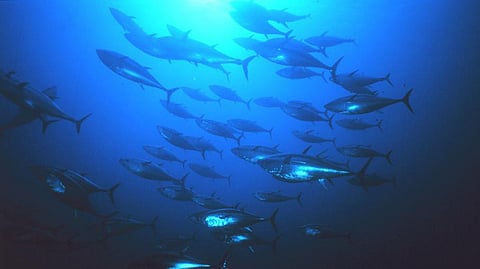Vietnam's tuna exports find growing market in Middle East
The Middle East is now emerging as one of Vietnam's top four tuna export markets, according to the Vietnam Association of Seafood Exporters and Producers (VASEP).
In 2024, Vietnam’s tuna exports to the Middle East continued their impressive growth, rising by 28 per cent compared to 2023.
A promising market
According to statistics from Vietnam Customs, tuna exports to the Middle Eastern market reached nearly US$113 million in 2024, ranking fourth after the US, the EU, and CPTPP member countries.
Vietnamese tuna products have penetrated almost all nations in this region, with Israel, Lebanon, and Egypt being the leading importers. Over the past year, tuna exports to key importing markets in the Middle East have all increased compared to the previous year.
Israel currently leads the region in importing Vietnamese tuna and is the second-largest single-country market after the US, accounting for nearly seven per cent of Vietnam’s total tuna export value in 2024, up 30 per cent from 2023.
Other countries such as Lebanon, Egypt, Saudi Arabia, and the UAE have also recorded strong double-digit growth.
VASEP said Vietnam’s signing of the Comprehensive Economic Partnership Agreement (CEPA) with the UAE—one of the region’s largest economic hubs and a key destination for Vietnamese seafood, including tuna—is creating further opportunities to boost exports.
Currently, both Vietnam and the UAE are striving to complete the CEPA ratification process by Q1 2025. Once the agreement comes into effect, tariffs on Vietnamese tuna exports to the UAE will immediately be reduced to zero per cent.
Significant challenges
VASEP said that, despite its potential, seafood exports to the Middle East face several challenges, with the most notable being Halal certification requirements. Products must be processed and certified in accordance with Islamic law, necessitating significant investment from Vietnamese exporters in production processes, inspections, and quality management.
According to projections by various organisations and experts, the global Muslim population is expected to increase by approximately 50 per cent by 2050, reaching 2.76 billion people. As a result, the global Halal industry is anticipated to grow substantially, driven by increased investment and technological advancements, such as pork detection technologies and Halal verification systems.
If Vietnamese products can meet Halal certification requirements in the UAE, this would serve as a key gateway to access broader Middle Eastern markets. Notably, Halal standards increasingly align with modern consumer trends, emphasising high quality, ethical sourcing, environmental sustainability, and clear traceability.
However, a major challenge for the global Halal food industry lies in the lack of uniformity in certification procedures. The differing Halal certification processes across countries can create confusion and hinder Vietnamese businesses in their efforts to enter new markets. Furthermore, companies must ensure a clear understanding of the specific components that constitute Halal-compliant food to fully meet market requirements.


